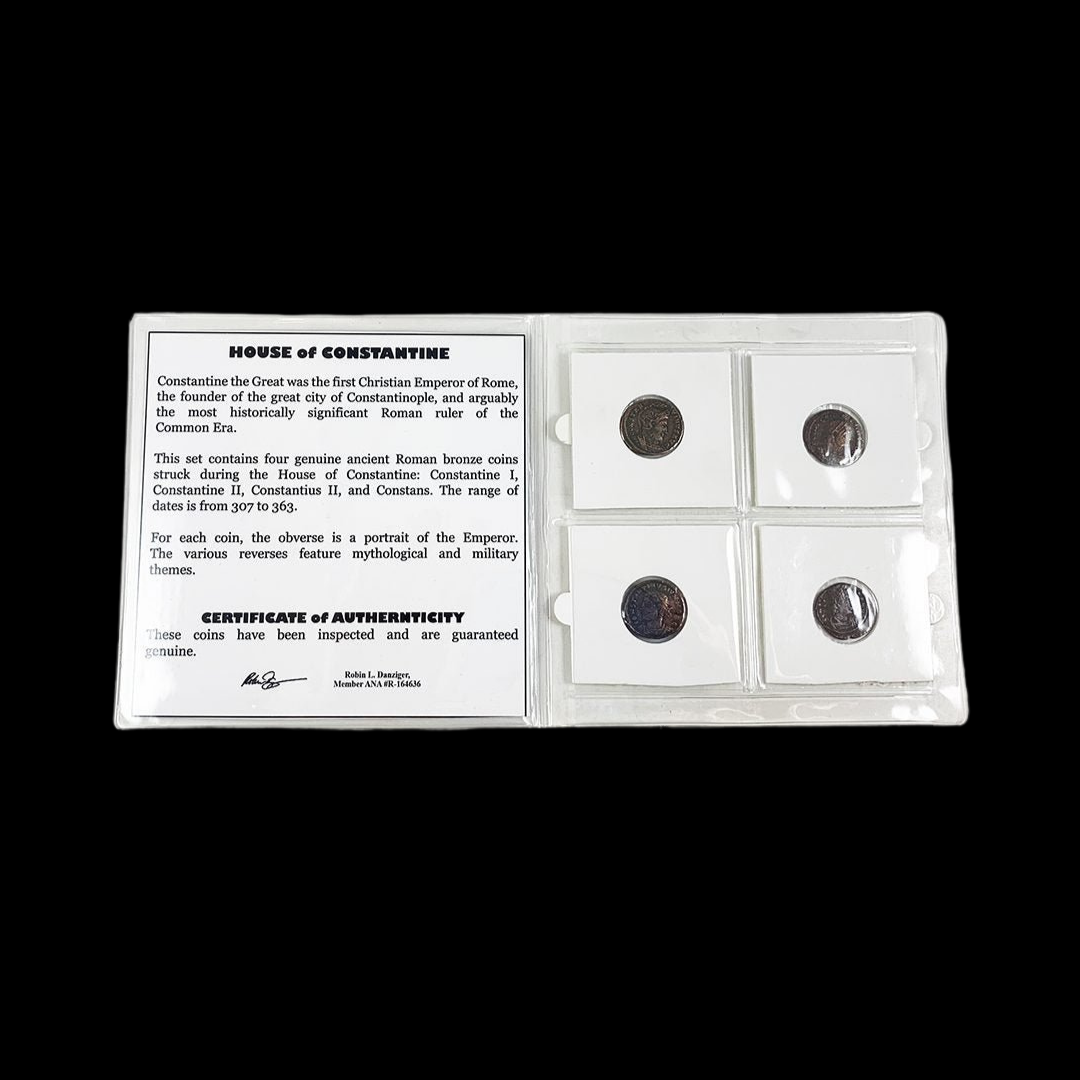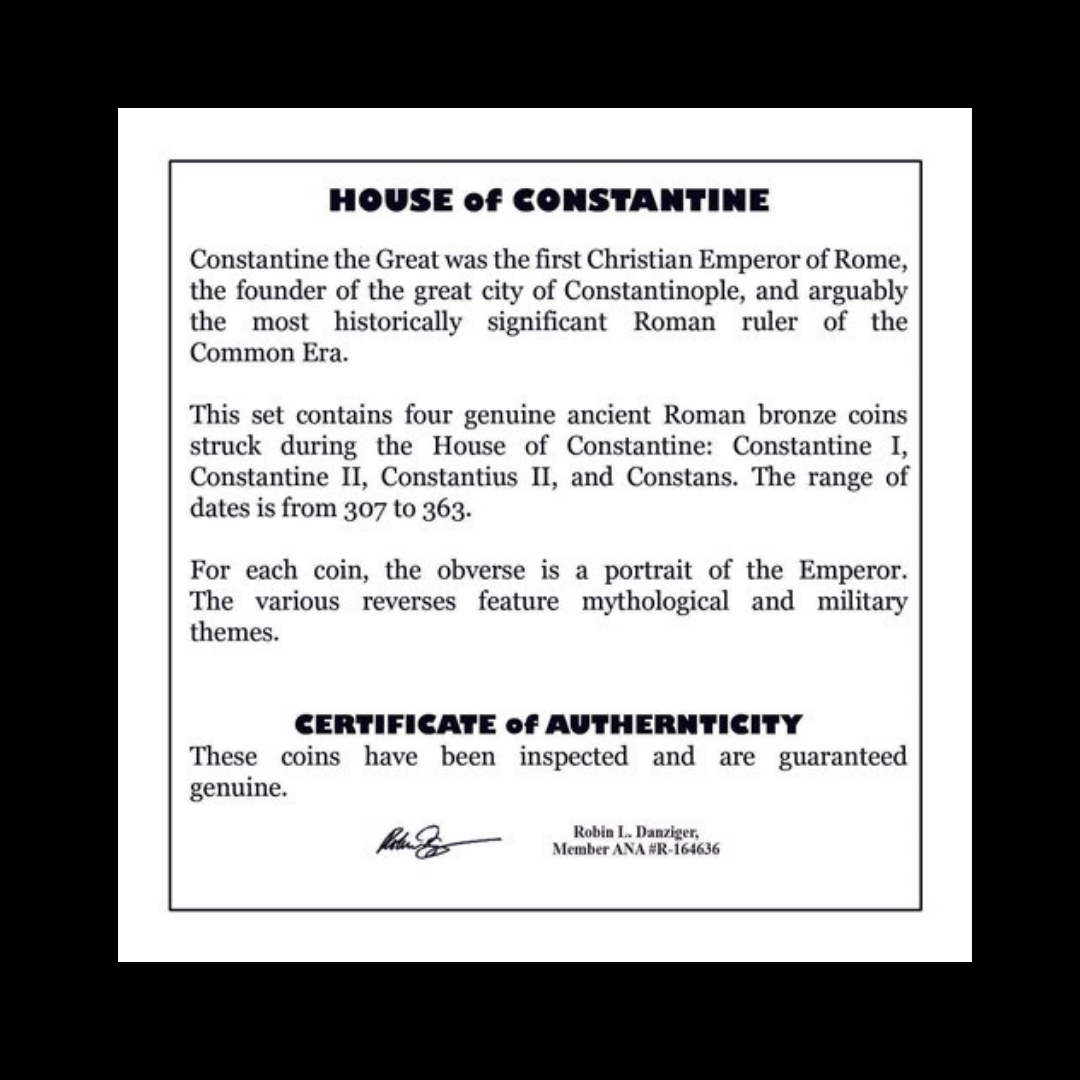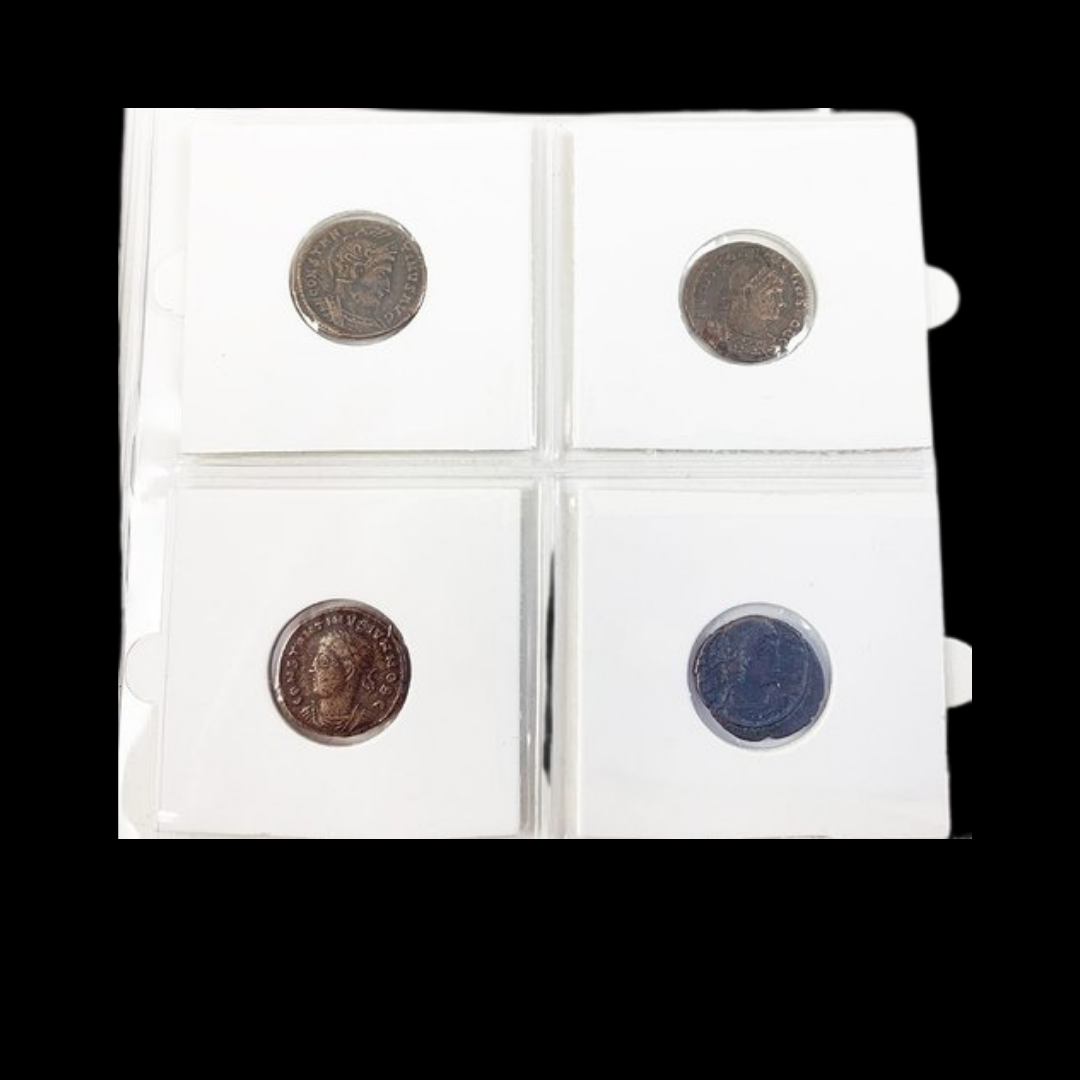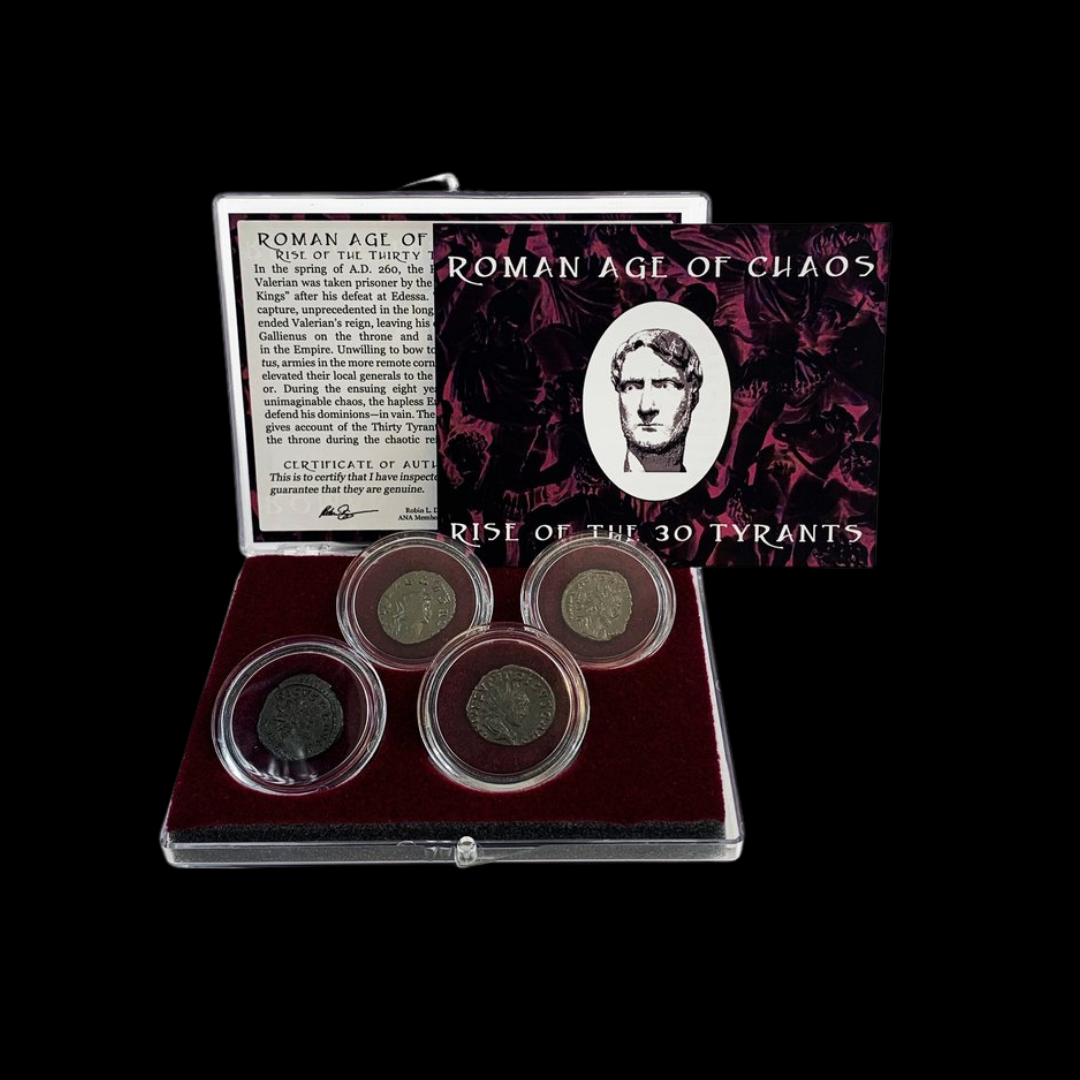 Image 1 of 5
Image 1 of 5

 Image 2 of 5
Image 2 of 5

 Image 3 of 5
Image 3 of 5

 Image 4 of 5
Image 4 of 5

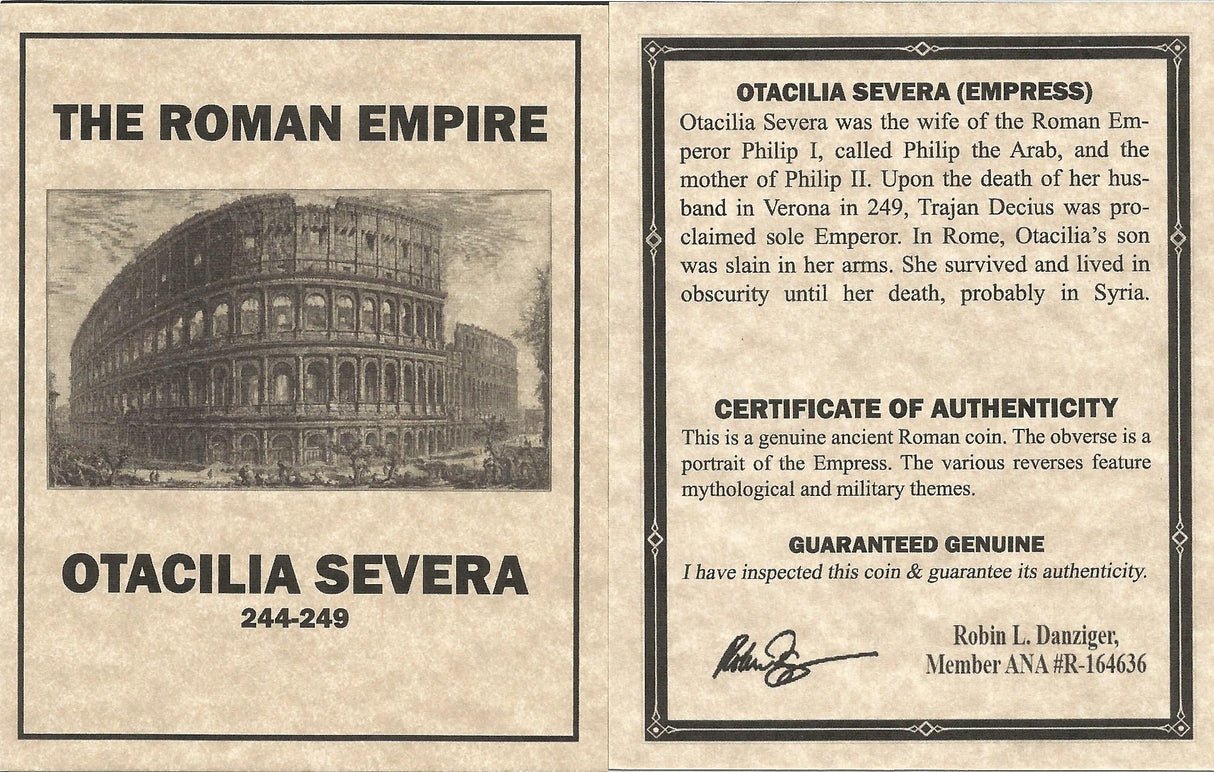 Image 5 of 5
Image 5 of 5






Roman Silver Coin of Empress Otacilia Severa (about 1,775-1,780 years ago)
The coins shown are representative examples of the grade and type, but not the actual specimens for sale. For details on NGC’s grading standards and definitions, please refer to our NGC Grading page.
This silver-washed antoninianus features Otacilia Severa, wife of Emperor Philip the Arab who ruled during Rome's tumultuous mid-third century. From an ancient aristocratic Roman family, Otacilia brought important pedigree to her husband's reign during the empire's 1,000th anniversary celebrations, though their dynasty would prove short-lived in an era of relentless military upheaval and imperial turnover.
Coin Description:
Front side: Portrait of Empress Otacilia Severa facing right, typically shown with hair arranged in waves and gathered at the back in a bun at the nape of her neck, with Latin inscription giving her name and titles
Back side: Likely depicts personifications such as Concordia (Harmony), Pudicitia (Modesty), or other female deities emphasizing traditional Roman values, with accompanying Latin text
Technical Details:
Silver-washed bronze composition (antoniniani of this period contained minimal silver)
Denomination: Antoninianus
NGC certified in protective slab
Minted between 244-249 AD
Condition as certified by NGC
Historical Significance: Otacilia Severa came from the ancient Roman nobility, bringing aristocratic credentials to her husband Philip's reign after he rose from humble origins in Arabia to become emperor through military advancement. Their rule coincided with Rome's millennium celebrations in 248 AD, marking 1,000 years since the city's legendary founding. Despite this auspicious milestone, Philip's reign occurred during the accelerating Crisis of the Third Century, when imperial succession became increasingly unstable. When her husband was killed in battle against the usurper Trajan Decius in 249 AD, Otacilia was spared execution—unusual clemency in this violent era—and permitted to live out her remaining years in private. Her coins often emphasized traditional Roman feminine virtues, projecting an image of stability and continuity during a period of profound imperial uncertainty.
The coins shown are representative examples of the grade and type, but not the actual specimens for sale. For details on NGC’s grading standards and definitions, please refer to our NGC Grading page.
This silver-washed antoninianus features Otacilia Severa, wife of Emperor Philip the Arab who ruled during Rome's tumultuous mid-third century. From an ancient aristocratic Roman family, Otacilia brought important pedigree to her husband's reign during the empire's 1,000th anniversary celebrations, though their dynasty would prove short-lived in an era of relentless military upheaval and imperial turnover.
Coin Description:
Front side: Portrait of Empress Otacilia Severa facing right, typically shown with hair arranged in waves and gathered at the back in a bun at the nape of her neck, with Latin inscription giving her name and titles
Back side: Likely depicts personifications such as Concordia (Harmony), Pudicitia (Modesty), or other female deities emphasizing traditional Roman values, with accompanying Latin text
Technical Details:
Silver-washed bronze composition (antoniniani of this period contained minimal silver)
Denomination: Antoninianus
NGC certified in protective slab
Minted between 244-249 AD
Condition as certified by NGC
Historical Significance: Otacilia Severa came from the ancient Roman nobility, bringing aristocratic credentials to her husband Philip's reign after he rose from humble origins in Arabia to become emperor through military advancement. Their rule coincided with Rome's millennium celebrations in 248 AD, marking 1,000 years since the city's legendary founding. Despite this auspicious milestone, Philip's reign occurred during the accelerating Crisis of the Third Century, when imperial succession became increasingly unstable. When her husband was killed in battle against the usurper Trajan Decius in 249 AD, Otacilia was spared execution—unusual clemency in this violent era—and permitted to live out her remaining years in private. Her coins often emphasized traditional Roman feminine virtues, projecting an image of stability and continuity during a period of profound imperial uncertainty.


